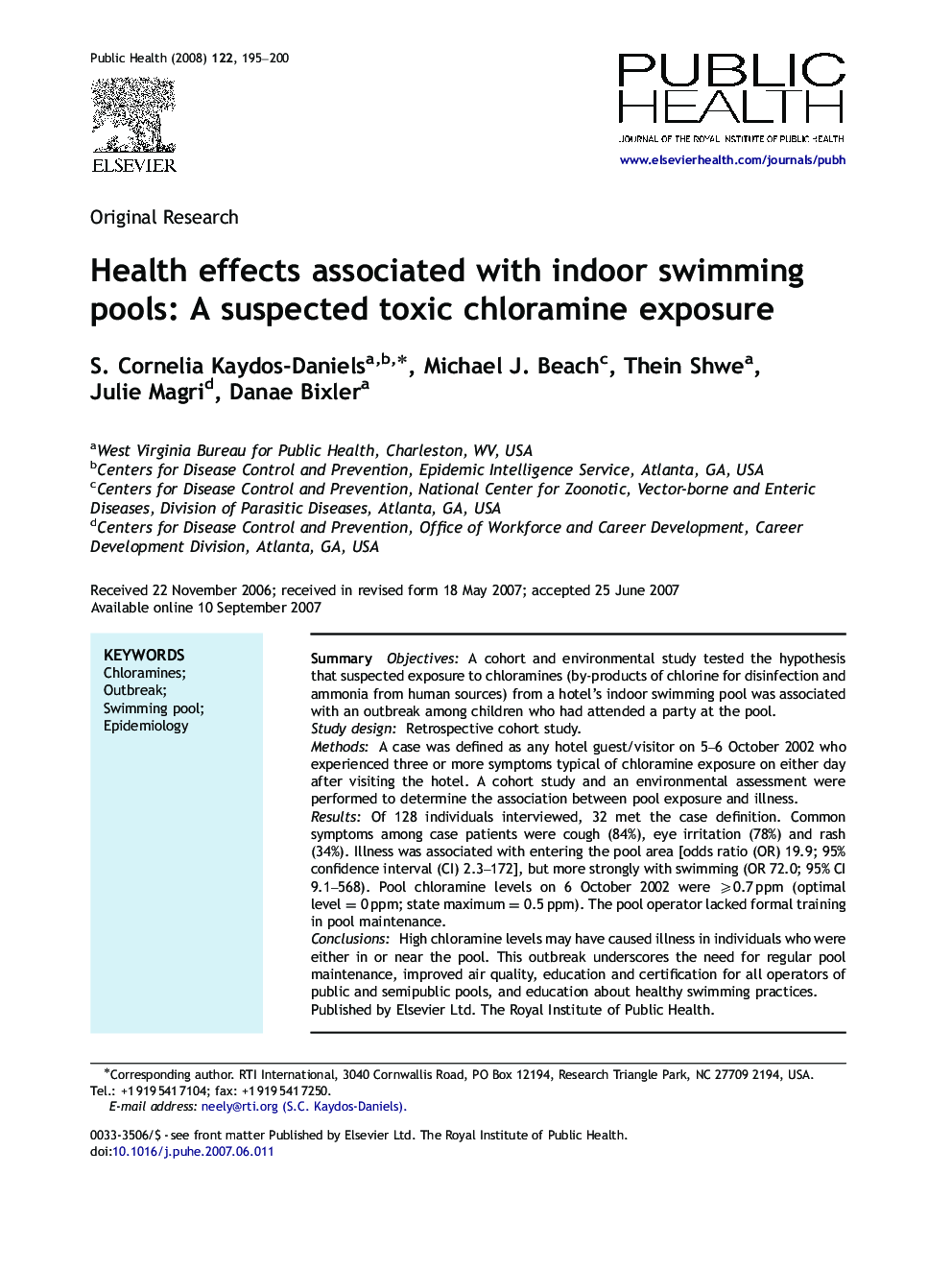| Article ID | Journal | Published Year | Pages | File Type |
|---|---|---|---|---|
| 1088306 | Public Health | 2008 | 6 Pages |
SummaryObjectivesA cohort and environmental study tested the hypothesis that suspected exposure to chloramines (by-products of chlorine for disinfection and ammonia from human sources) from a hotel's indoor swimming pool was associated with an outbreak among children who had attended a party at the pool.Study designRetrospective cohort study.MethodsA case was defined as any hotel guest/visitor on 5–6 October 2002 who experienced three or more symptoms typical of chloramine exposure on either day after visiting the hotel. A cohort study and an environmental assessment were performed to determine the association between pool exposure and illness.ResultsOf 128 individuals interviewed, 32 met the case definition. Common symptoms among case patients were cough (84%), eye irritation (78%) and rash (34%). Illness was associated with entering the pool area [odds ratio (OR) 19.9; 95% confidence interval (CI) 2.3–172], but more strongly with swimming (OR 72.0; 95% CI 9.1–568). Pool chloramine levels on 6 October 2002 were ⩾0.7 ppm (optimal level=0 ppm; state maximum=0.5 ppm). The pool operator lacked formal training in pool maintenance.ConclusionsHigh chloramine levels may have caused illness in individuals who were either in or near the pool. This outbreak underscores the need for regular pool maintenance, improved air quality, education and certification for all operators of public and semipublic pools, and education about healthy swimming practices.
